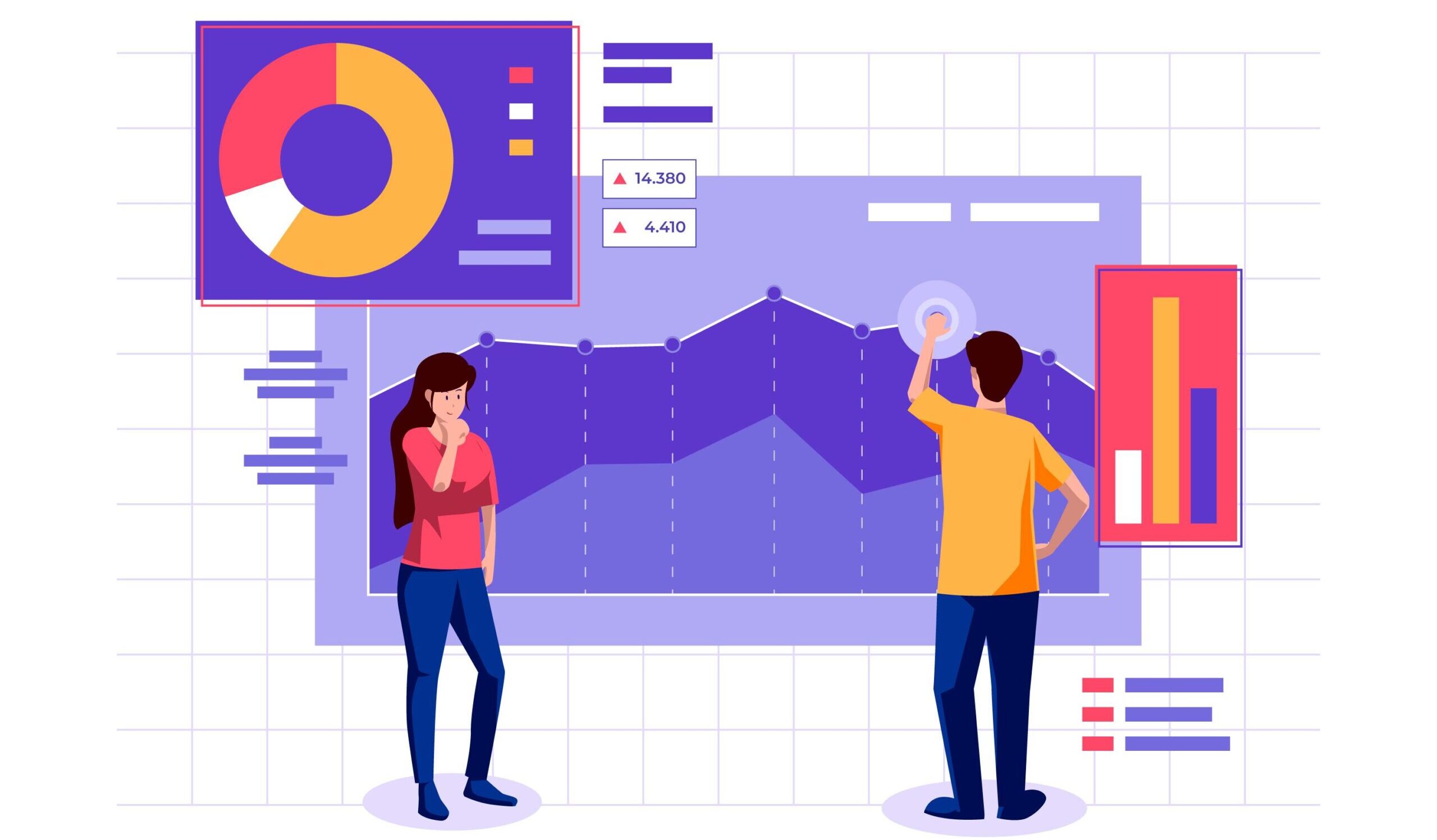What is Data Analytics and Its Types
In today’s rapidly evolving information-driven environment, the immense volume of data produced daily is genuinely remarkable. The capacity to derive significant insights from this extensive reservoir of information has become indispensable for organizations striving to gain a competitive advantage. This is where data analytics assumes a pivotal role. Data analytics encompasses systematically exploring, interpreting, and examining data to reveal valuable patterns, trends, and knowledge that can guide strategic decision-making.
Data analytics is multi-faceted, incorporating various techniques and methodologies to extract actionable intelligence from raw data. Using advanced algorithms and statistical methods, data analytics enables businesses and individuals to make informed decisions, streamline processes, and develop a more comprehensive understanding of their surroundings. Interact with IT Support Marquette to leverage the power of data analytics in your business.
This article will explore data analytics in business and data analytics types.
What is Data Analytics in Business?
Data analytics in business examines large data sets to uncover patterns, insights, and trends that can be used to make informed business decisions. It involves collecting, organizing, and analyzing data from various sources, such as customer transactions, social media interactions, and market research.
Businesses can gain valuable insights into their operations, customer behaviour, and market trends by applying statistical techniques and algorithms. These insights can optimize processes, improve customer experiences, identify new business opportunities, and drive overall growth and profitability. In today’s data-driven world, data analytics has become essential for businesses looking to stay competitive and make data-backed decisions.
7 Types of Data Analytics
Descriptive Analytics
Descriptive analytics is one of the fundamental types of data analytics. It involves analyzing historical data to understand and describe what has happened in the past. By examining patterns, trends, and relationships within the data, descriptive analytics provides insights into current affairs.
This analysis typically involves summarizing and visualizing data through charts, graphs, and tables. Descriptive analytics is valuable for better understanding past performance, identifying areas for improvement, and making informed decisions based on historical data.
Diagnostic Analytics
Diagnostic analytics is one of the main types of data analytics, along with descriptive, predictive, and prescriptive analytics. Diagnostic analytics involves analyzing past data to determine the causes of specific outcomes or events. It focuses on understanding why something happened by examining historical data and looking for patterns or correlations.
This type of analysis can help businesses identify trends, pinpoint problem areas, and gain insights into the factors contributing to specific outcomes. By understanding the root causes of certain events or behaviours, organizations can make more informed decisions and take actions to improve performance or address issues. Diagnostic analytics is crucial in helping businesses gain a deeper understanding of their operations and make data-driven decisions for future success.
Predictive Analytics
Predictive analytics is a type of data analysis that focuses on predicting future outcomes based on historical data and statistical models. It involves using various techniques, such as regression analysis, data mining, and machine learning algorithms, to identify patterns and trends in the data that can be used to make predictions.
Predictive analytics is widely used in various fields, including finance, marketing, healthcare, and manufacturing. By accurately predicting future events or behaviours, organizations can make more informed decisions and take proactive measures to achieve their goals. However, it is essential to note that predictive analytics is not foolproof and relies heavily on the quality of the data and the accuracy of the models used.
Prescriptive Analytics
Prescriptive analytics is a type of data analytics that focuses on providing recommendations and actions to optimize future outcomes. It goes beyond descriptive and predictive analytics by analyzing historical data, predicting future trends, and suggesting the best action to achieve desired outcomes.
Prescriptive analytics uses a combination of mathematical models, algorithms, optimization techniques, and business rules to provide actionable insights and help decision-makers make informed choices. By considering various constraints, objectives, and potential scenarios, prescriptive analytics can assist in making strategic decisions that drive growth, efficiency, and competitive advantage.
Real-time Analytics
Real-time analytics is a type of data analytics that focuses on processing and analyzing data as it is generated, allowing for immediate insights and decision-making. This type of analytics is beneficial in industries where real-time information is crucial, such as finance, e-commerce, and transportation. Real-time analytics involves collecting and analyzing real-time data, often streaming analytics or complex event-processing technologies.
Organizations can gain valuable insights into customer behaviour, market trends, and operational efficiency by analyzing data as it is generated to make timely and informed decisions. Analyzing real-time data can provide a competitive advantage by enabling businesses to respond quickly to changing market conditions and customer needs.
Text Analytics (or Natural Language Processing – NLP)
Text analytics, or natural language processing (NLP), is a branch of data analytics that focuses on extracting insights and meaning from unstructured text data. This data type includes written documents, social media posts, customer reviews, and other forms of textual information.
Text analytics uses various data analysis techniques, such as sentiment analysis, topic modelling, and named entity recognition. By applying these techniques, businesses can gain valuable insights into customer preferences, market trends, and brand reputation. Text analytics is a powerful tool for unlocking the hidden value within text data and is widely used in industries such as marketing, customer service, and market research.
Exploratory Data Analysis (EDA)
Exploratory Data Analysis (EDA) plays a crucial role in the data analytics process. It entails meticulously examining and comprehending a dataset’s characteristics to unveil patterns, relationships, and insights that can guide further analysis. Analysts employ statistical techniques and visualizations throughout the EDA process to briefly summarize and thoroughly explore the data.
This aids in detecting anomalies or missing values, evaluating data quality, and developing a preliminary understanding of its distribution and structure. By conducting comprehensive EDA, analysts can make more informed decisions regarding applying analytical methods and formulating pertinent questions about the data.
Conclusion
Data analytics is a crucial process that empowers organizations to derive valuable insights from vast amounts of data. This enables informed decision-making and strategic planning. There are various types of data analytics – descriptive, diagnostic, predictive, and prescriptive analytics. Each serves a unique purpose in uncovering patterns, trends, correlations, and causations within datasets. By leveraging these methodologies, businesses, researchers, and industries can harness the power of data to enhance efficiencies, optimize processes, identify opportunities, mitigate risks, and ultimately drive innovation and growth in an increasingly data-driven world.


















